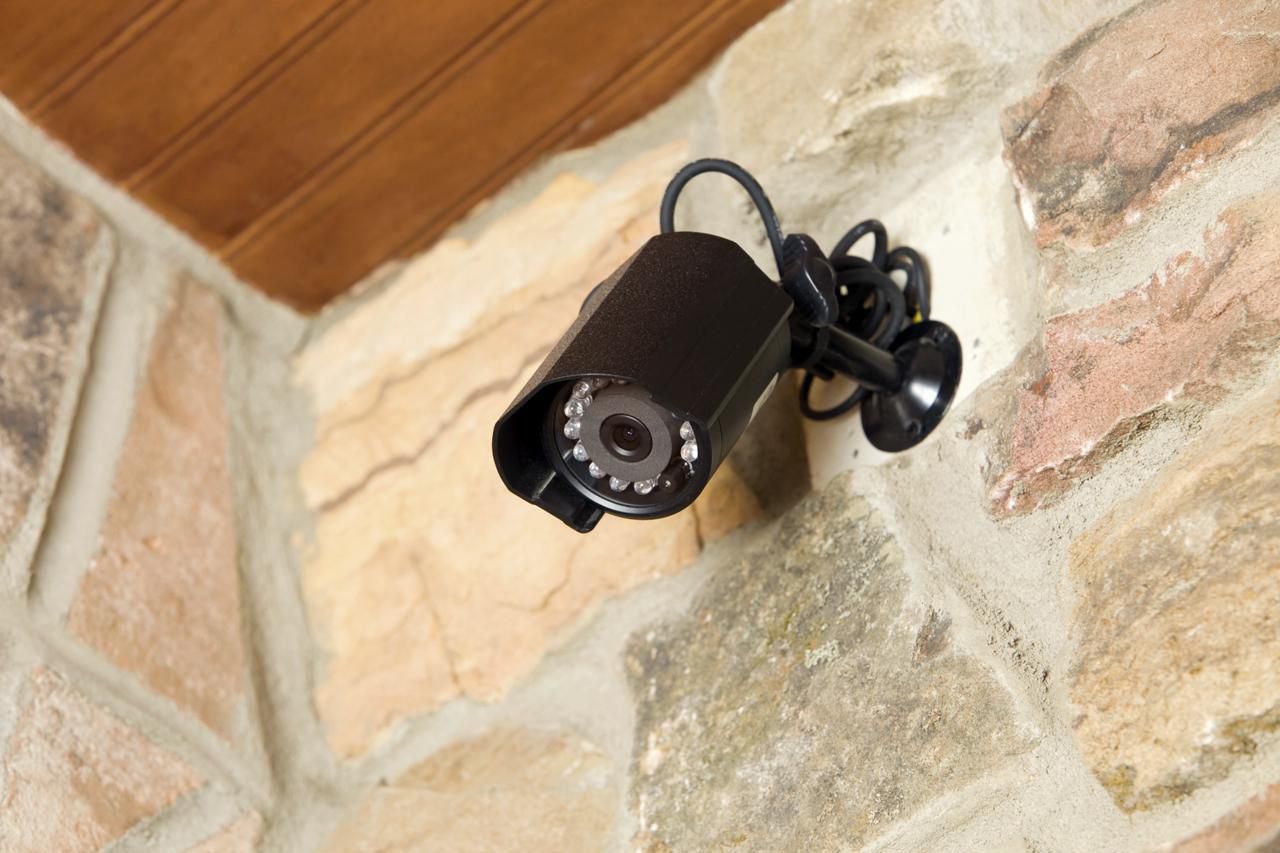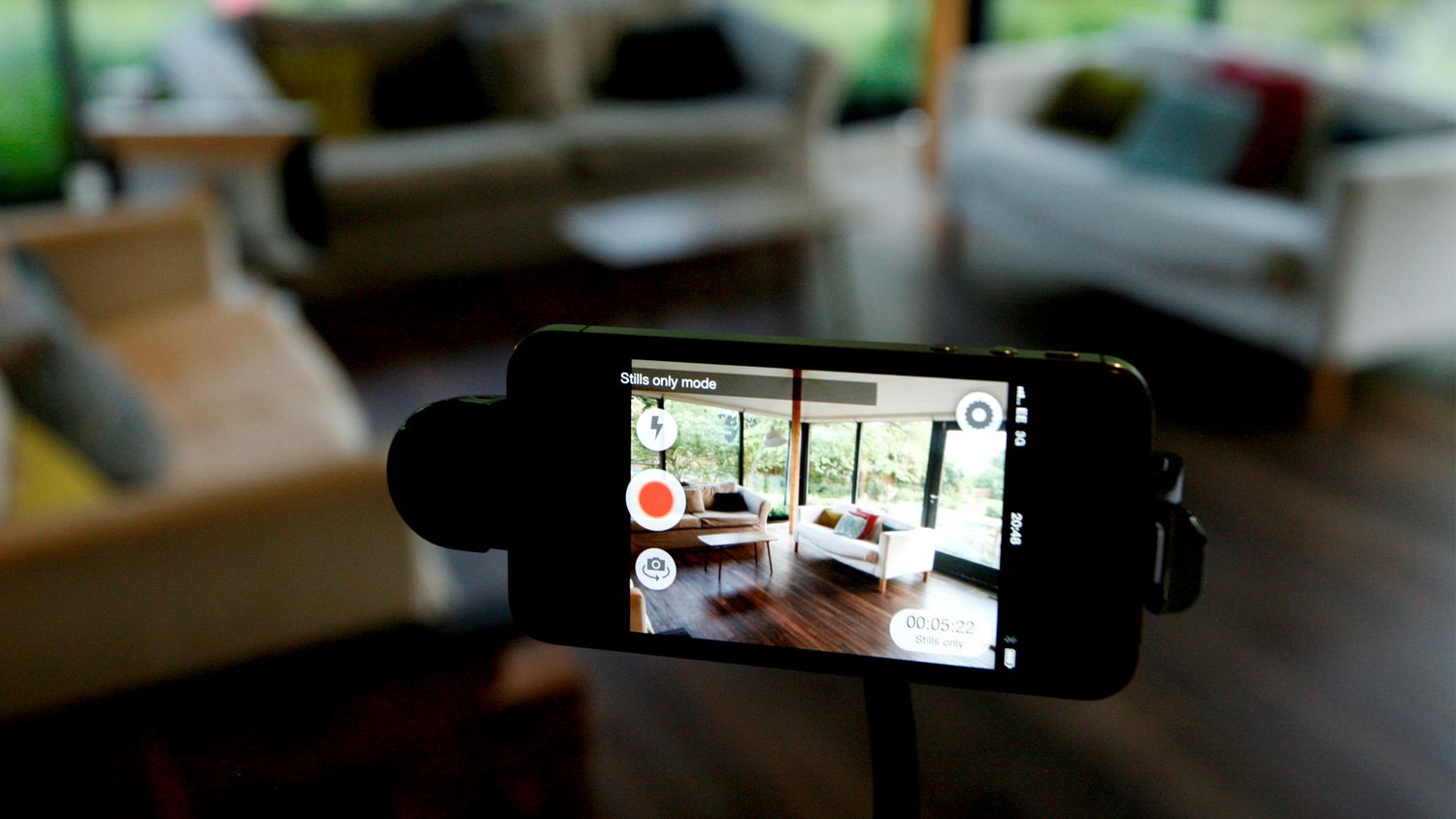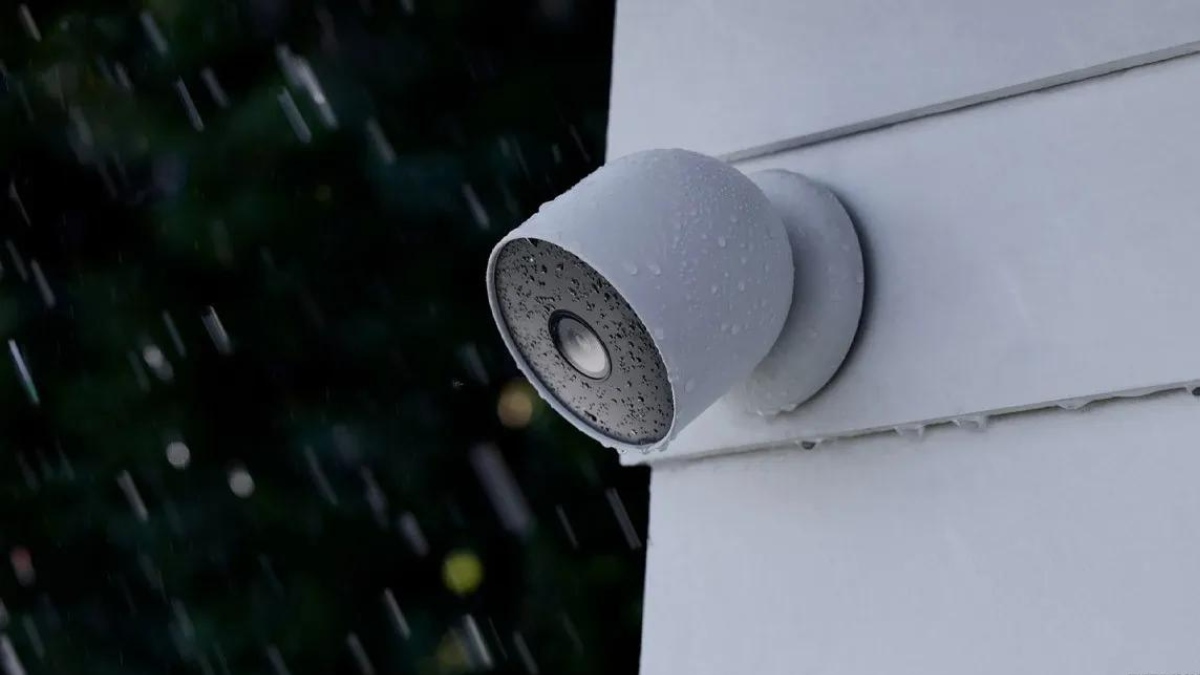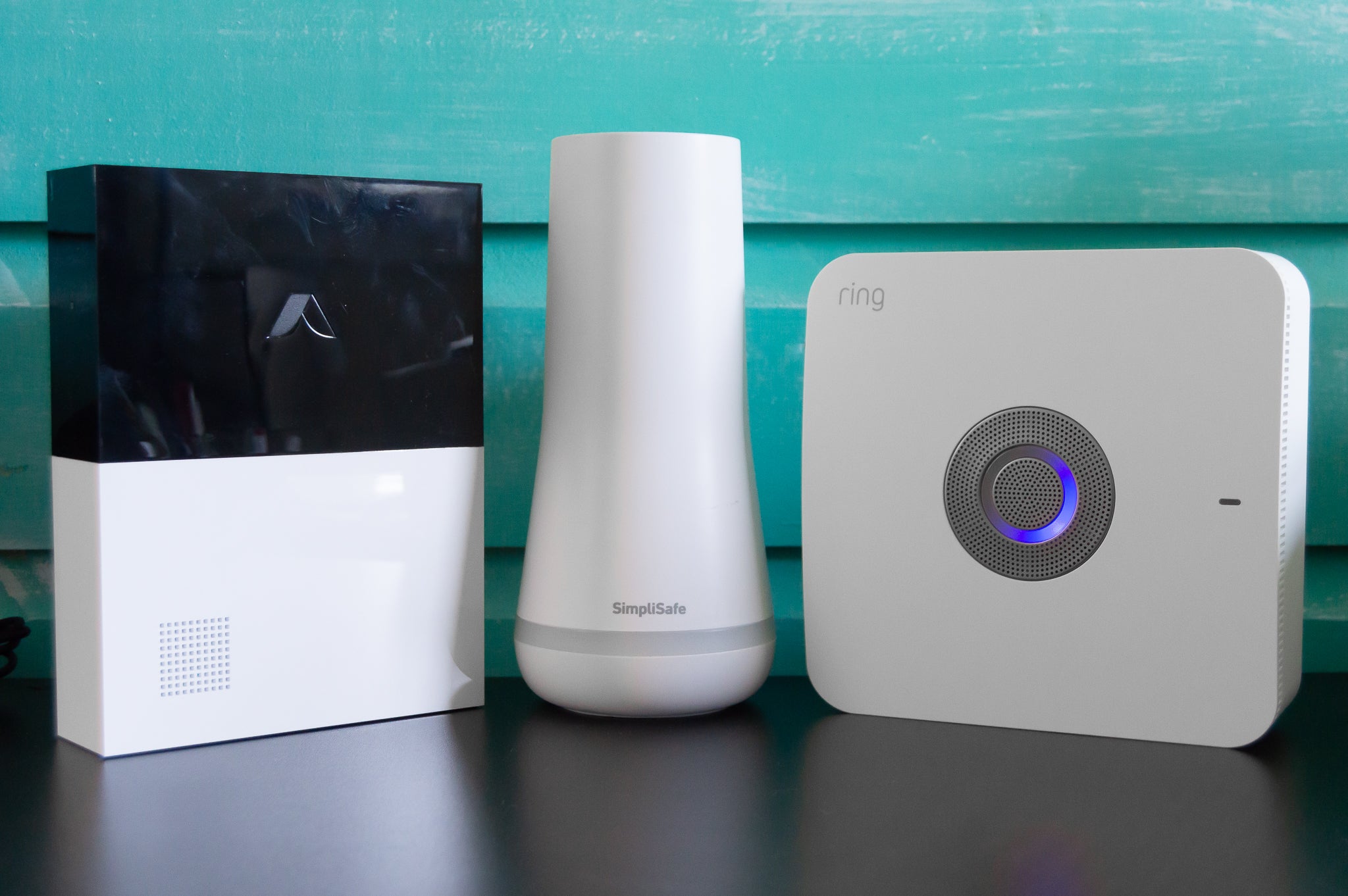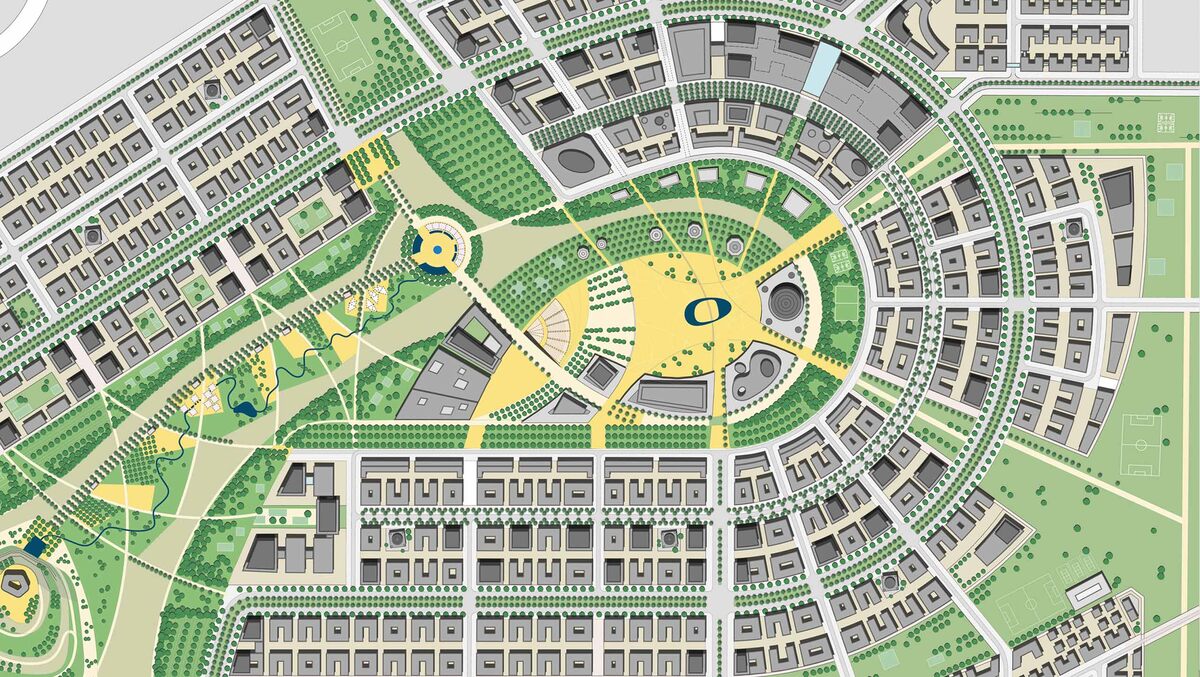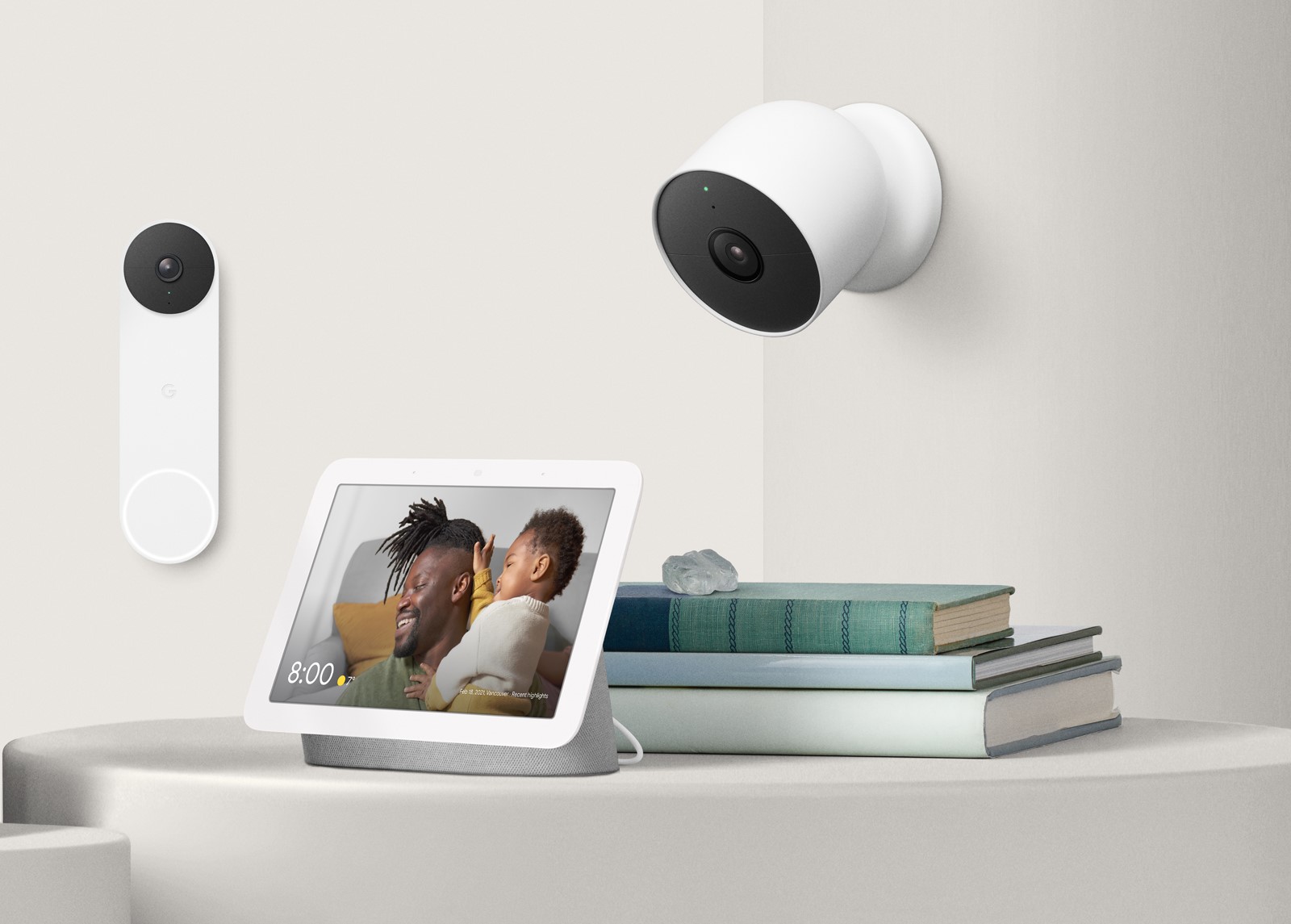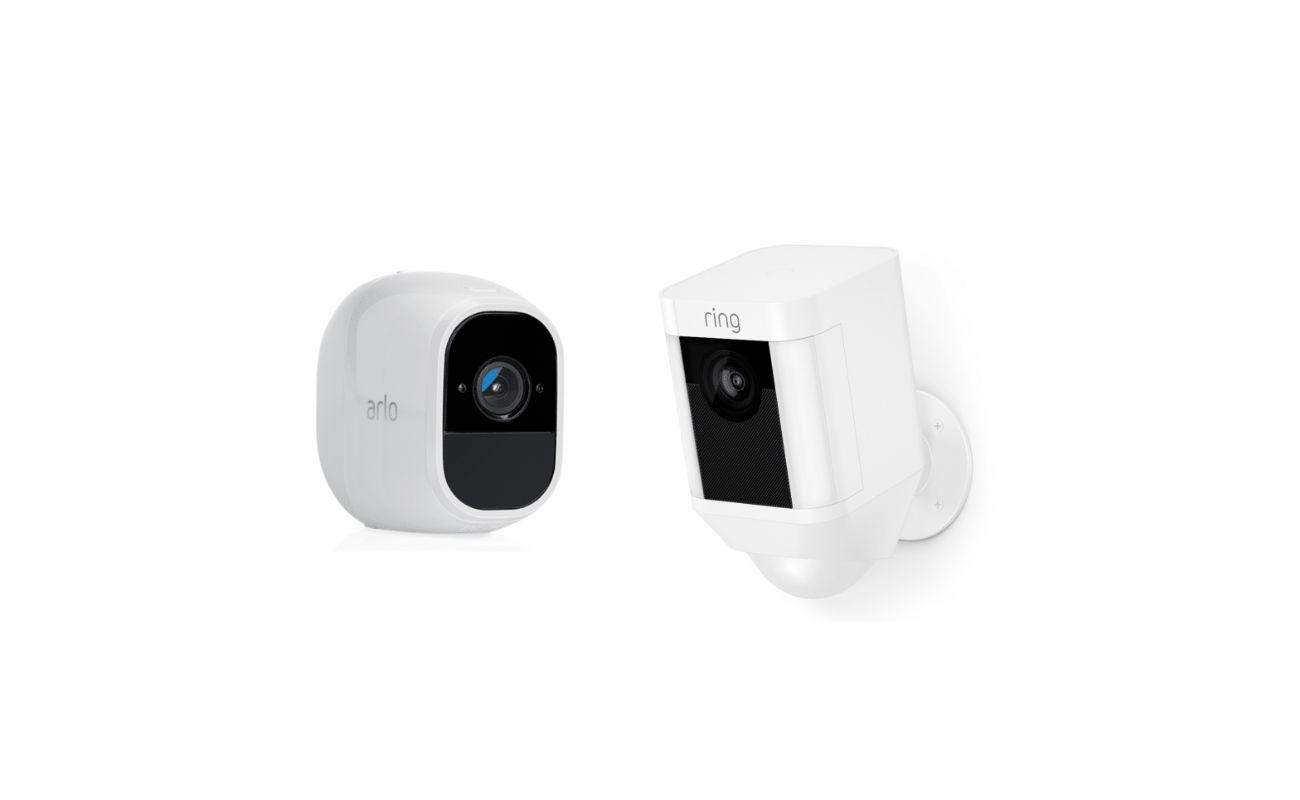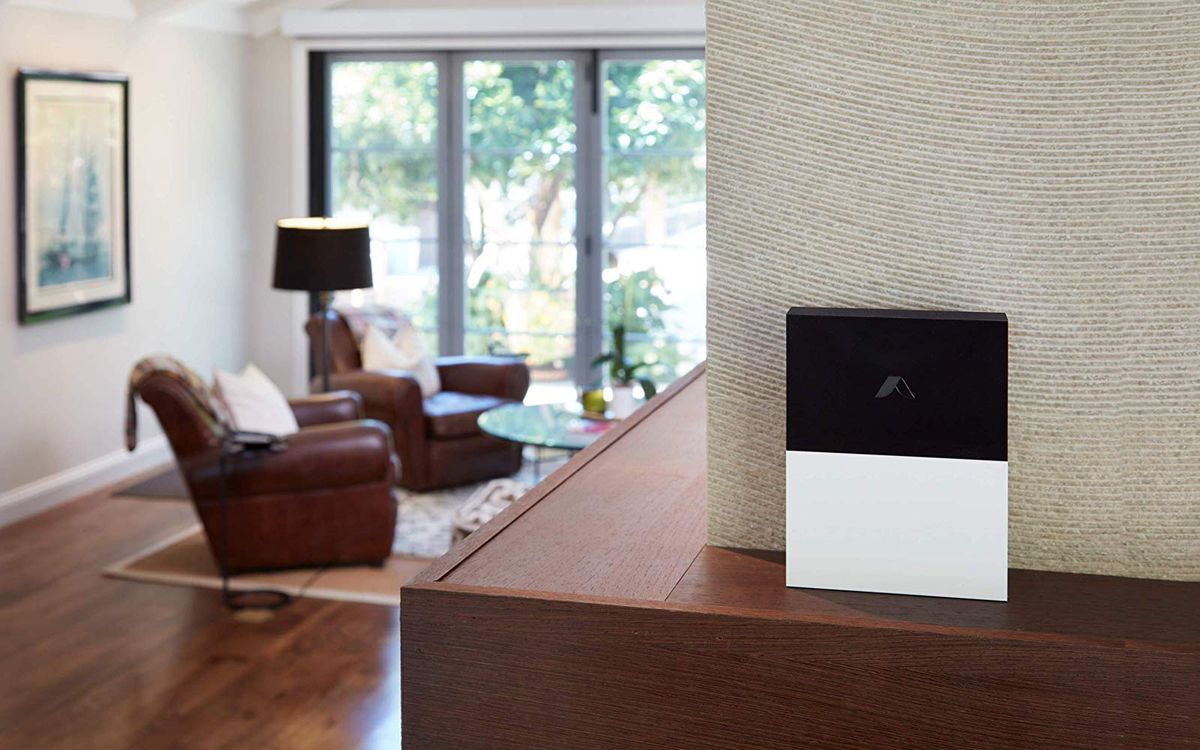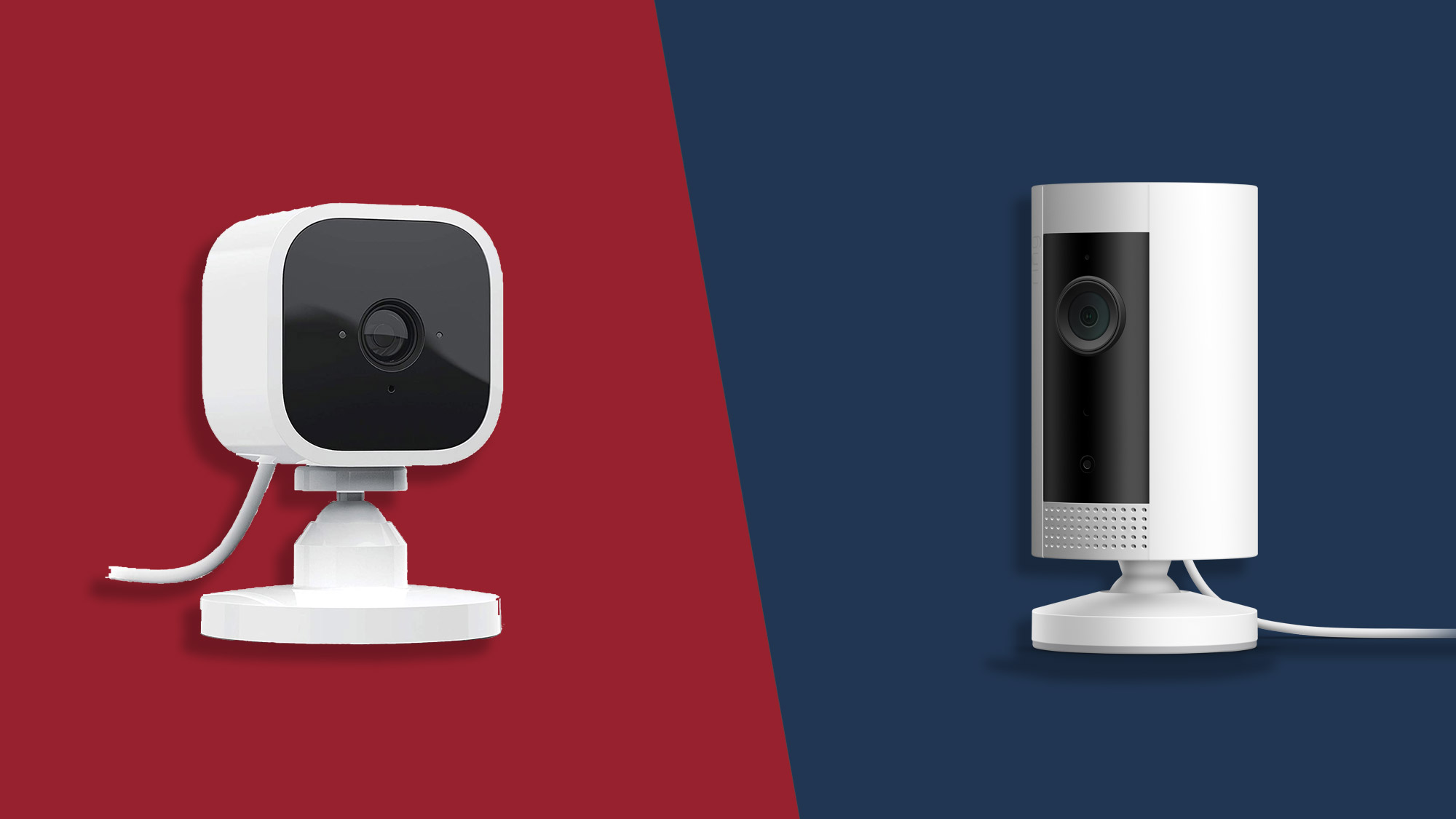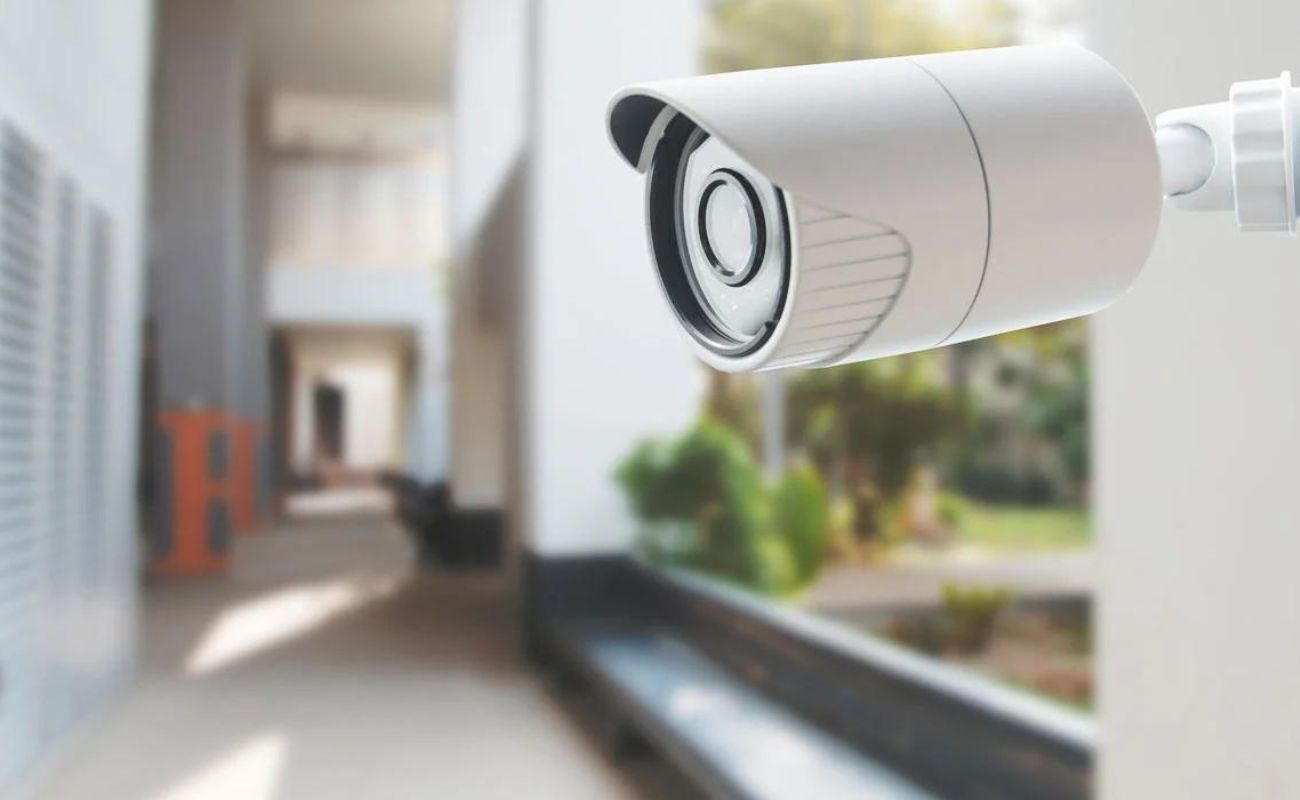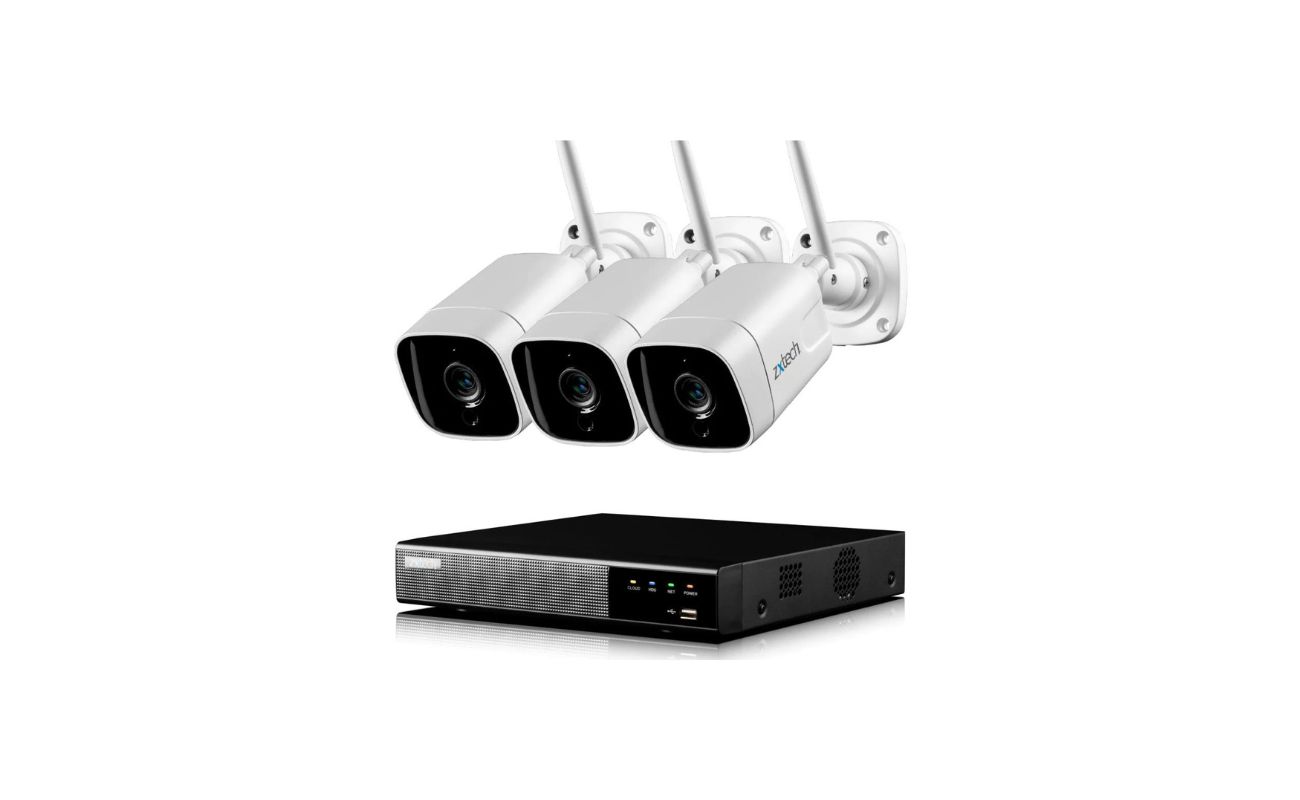Home>Home Security and Surveillance>Which Home Security System Allows Arming Specific Zones
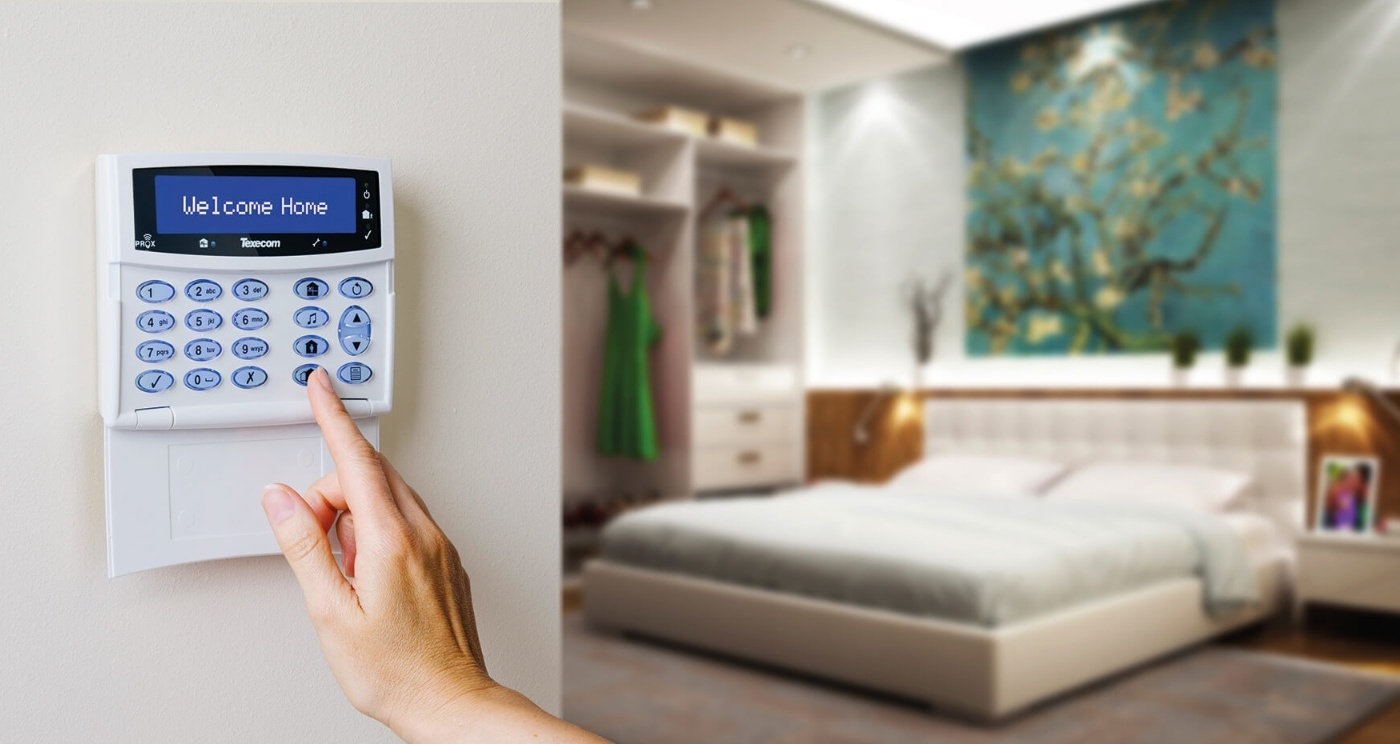

Home Security and Surveillance
Which Home Security System Allows Arming Specific Zones
Modified: March 19, 2024
Discover the best home security and surveillance system that allows you to arm specific zones for enhanced protection of your property. Protect your home with advanced technology and peace of mind.
(Many of the links in this article redirect to a specific reviewed product. Your purchase of these products through affiliate links helps to generate commission for Storables.com, at no extra cost. Learn more)
Introduction
Welcome to the world of home security systems, where peace of mind meets innovation. In today’s fast-paced world, ensuring the safety and security of your home is of paramount importance. With the advancement of technology, home security systems have become more sophisticated and feature-rich than ever before.
A home security system is a network of devices and sensors designed to protect your home from potential threats such as burglaries, fires, and carbon monoxide leaks. These systems provide round-the-clock surveillance and instant alerts, giving you the ability to monitor and secure your home from anywhere, at any time.
In this article, we will explore the concept of arming specific zones in a home security system. We will delve into the various types of home security systems available in the market, and highlight the benefits of choosing a system that allows for zone arming. By the end, you will have a well-rounded understanding of how home security systems with zone control can enhance the safety and protection of your home.
So, let’s dive in and explore the world of home security systems, shall we?
Key Takeaways:
- Home security systems with zone control allow you to customize which areas of your home are armed, providing targeted protection, flexibility, and convenience. This feature enhances security and minimizes false alarms.
- When choosing a home security system, consider its type, zone control options, user interface, expandability, integration with other devices, monitoring options, and cost. Select a system that aligns with your needs and provides optimal protection for your home.
Read more: What Zoning Allows Mobile Homes
Understanding Home Security Systems
Home security systems are designed to provide you with advanced protection and peace of mind. They consist of a combination of devices and sensors strategically placed throughout your home to detect and deter potential threats. These systems can be as simple as a basic alarm system or as complex as a fully integrated smart home security system.
The primary goal of a home security system is to detect any unauthorized entry or suspicious activity and take immediate action. This is achieved through various components, including door and window sensors, motion detectors, surveillance cameras, and a control panel that serves as the central hub for the system.
When a home security system is armed, it constantly monitors the surroundings for any signs of unauthorized entry or other potential threats. If a sensor or detector is triggered, the system will activate an alarm, alerting the homeowners and potentially scaring away the intruders. Depending on the level of sophistication, the system may also send alerts to the homeowner’s smartphone or a professional monitoring service for further action.
In addition to deterring burglaries, home security systems can provide protection against other hazards such as fires, carbon monoxide leaks, and flooding. Many systems offer add-on features such as smoke detectors, carbon monoxide detectors, and water sensors to provide comprehensive coverage for your home.
With recent advancements in technology, home security systems have evolved to include smart home integration. This means that you can control and monitor your security system remotely through a smartphone app or voice commands. Smart home security systems offer added convenience, allowing you to arm and disarm your system, view live camera feeds, and receive notifications from anywhere in the world.
Now that we have a general understanding of home security systems, let’s explore the basic functions of these systems in more detail.
Basic Functions of Home Security Systems
Home security systems are designed to provide a comprehensive range of functions that work together to ensure the safety and security of your home. Let’s take a closer look at these essential functions:
- Intrusion Detection: One of the primary functions of a home security system is to detect and deter burglaries and unauthorized entry into your home. Door and window sensors, motion detectors, and glass break sensors are commonly used to detect any suspicious activity. When a sensor is triggered, the system initiates an alarm to alert the homeowners and potentially scare away intruders.
- Alarm System: A loud siren or alarm is a crucial component of a home security system. When an intrusion is detected or a sensor is triggered, the alarm system will activate, creating a loud noise to alert the homeowners and neighbors. The alarm can serve as a deterrent, as intruders are more likely to flee if they are aware their presence has been detected.
- Surveillance: Many home security systems include surveillance cameras that provide video monitoring of the inside and outside of your home. These cameras can be accessed remotely, allowing you to view live video feeds from your smartphone or computer. Surveillance cameras are not only helpful for deterring burglaries but also for monitoring and recording any suspicious activity.
- Remote Access: With the advent of smart home technology, home security systems now offer remote access capabilities. This enables homeowners to control and monitor their security system from anywhere in the world using a smartphone app or computer. Remote access allows you to arm and disarm the system, receive real-time notifications, and even view live camera feeds.
- Professional Monitoring: Many home security systems offer the option for professional monitoring. With professional monitoring, a monitoring center is alerted when a sensor is triggered or an alarm is activated. The monitoring center will then contact the homeowner and, if necessary, dispatch emergency services to the location. Professional monitoring adds an extra layer of protection and ensures that help is on the way when needed.
- Environmental Protection: In addition to intrusions, home security systems can also provide protection against environmental hazards. Smoke detectors, carbon monoxide detectors, and water sensors can be integrated into the system to detect and alert homeowners of potential fire, gas, or water damage threats. Prompt detection and notification of these hazards can save lives and prevent extensive property damage.
These basic functions work together to create a robust and reliable home security system that provides comprehensive protection and peace of mind.
Arming and Disarming
Arming and disarming a home security system is a fundamental aspect of its functionality. This process allows you to activate or deactivate the system as needed, ensuring that your home is protected when you’re away and providing flexibility when you’re at home.
When you arm your home security system, it enters a state of readiness, actively monitoring the sensors and detectors for any signs of intrusion or other threats. Arming the system typically involves entering a unique code or using a mobile app to activate the system.
There are different ways in which you can arm your home security system:
- Away Mode: This mode is typically used when you’re leaving your home for an extended period. When in away mode, the entire home is armed, and all sensors and detectors are active. Any movement or breach of security triggers the alarm and alerts the monitoring center or homeowner.
- Stay Mode: Stay mode is used when you’re staying at home but still want to secure certain areas. In this mode, you can arm specific zones or areas of your home while leaving others disarmed. This allows you to move freely within the disarmed zones while ensuring that the armed zones are protected.
- Night Mode: Night mode is similar to stay mode but is specifically designed for nighttime use. In night mode, you can choose to arm specific zones or areas of your home that you want to secure while you sleep. This mode provides an added level of security and peace of mind during the night hours.
Disarming your home security system is the process of deactivating it. This is typically done when you return home or no longer need the system to be active. Disarming the system can be as simple as entering your unique code or using a mobile app to deactivate it.
It’s important to note that some home security systems have additional features that allow for temporary disarmament or partial arming. For example, if you have guests staying in a specific area of your home, you may want to temporarily disarm that zone while keeping the rest of the system armed. This flexibility ensures that you can tailor the security settings to match your specific needs.
Arming and disarming your home security system effectively allows you to take control of your home’s security. By choosing the appropriate arming mode and utilizing zone control features, you can customize your system to fit your lifestyle and provide optimal protection for your home and loved ones.
Types of Home Security Systems
When it comes to home security systems, there are various types to choose from, each with its own set of features and benefits. Understanding the different types of security systems can help you make an informed decision about which one is best suited for your home. Here are the two main types of home security systems:
- Traditional Home Security Systems: Traditional home security systems have been around for decades and are hardwired into the home’s electrical system. These systems typically consist of a control panel, sensors, and a wired connection to a monitoring center. When a sensor is triggered, such as a door or window opening, the control panel sends a signal to the monitoring center, which then takes appropriate action, such as dispatching authorities or contacting the homeowner.
- Wireless Home Security Systems: Wireless home security systems have gained popularity in recent years due to their ease of installation and flexibility. These systems use wireless technology to connect the various components, eliminating the need for extensive wiring. The control panel communicates with the sensors and detectors via radio frequency signals, and alerts are sent to the homeowner’s smartphone or a monitoring center. Wireless systems are generally easier to install and can be more adaptable to changes in the home’s layout.
Both traditional and wireless home security systems offer a range of features and options to enhance the security of your home. These features may include:
- Door and window sensors: These sensors detect when a door or window is opened or forcibly breached.
- Motion detectors: These devices detect movement within their range and can trigger an alarm if an intruder is detected.
- Surveillance cameras: Video cameras provide visual monitoring of your property and can be accessed remotely.
- Smartphone integration: Many home security systems can be controlled and monitored through a smartphone app, allowing you to arm, disarm, and receive alerts no matter where you are.
- Professional monitoring: Some systems offer the option for professional monitoring, where a monitoring center is alerted when an alarm is triggered and takes appropriate action.
- Environmental sensors: Alongside intrusions, home security systems can include sensors for detecting fire, smoke, carbon monoxide, and flooding.
Both traditional and wireless systems have their own advantages and may be better suited for different types of homes and lifestyles. It’s important to consider factors such as ease of installation, scalability, and integration with other smart home devices when choosing a home security system.
Now that we have covered the different types of home security systems, let’s dive deeper into the concept of zone control in these systems.
Read more: How To Clear A Zone On Xfinity Home Security
Traditional Home Security Systems
Traditional home security systems have been a staple in the security industry for many years. These systems have a hardwired infrastructure that connects various components to a central control panel. Traditional systems offer a reliable and robust solution for home security needs.
The main components of a traditional home security system include:
- Control Panel: The control panel is the brain of the security system. It is typically installed in a centralized location within the home and connects all the components of the system.
- Keypad: The keypad allows homeowners to arm and disarm the system by entering a unique code. It also provides access to system programming and configuration.
- Door and Window Sensors: These sensors are placed on doors and windows throughout the home to detect when they are opened or closed. If a sensor is triggered, the control panel is alerted, and an alarm is activated.
- Motion Detectors: Motion detectors are designed to detect movement within their specified range. They can be strategically placed in areas where an intruder is likely to pass, such as hallways or entry points.
- Siren: The siren is a crucial component of a traditional home security system. When an alarm is triggered, the siren emits a loud noise to alert homeowners and potentially scare away intruders.
- Monitoring Center: Many traditional home security systems offer the option for professional monitoring. In this case, when an alarm is triggered, the monitoring center is notified, and appropriate action is taken, such as contacting the homeowner or dispatching authorities.
One of the advantages of traditional home security systems is their reliability. Since these systems are hardwired, they are not affected by wireless interference or signal loss. This makes them less susceptible to hacking or tampering. Additionally, traditional systems do not rely on batteries, so there is no need for regular battery replacements.
However, traditional home security systems can be more challenging to install, especially in existing homes where running wires may require extensive modifications. They also tend to be less flexible when it comes to adding or rearranging components.
Despite these limitations, traditional home security systems continue to be a popular choice for homeowners looking for a reliable and proven solution. With their hardwired infrastructure, sturdy components, and professional monitoring options, traditional systems provide an effective means of securing your home and protecting your loved ones.
Now, let’s explore the advantages of wireless home security systems in more detail.
Look for a home security system with “zone arming” feature, which allows you to arm specific areas of your home while leaving others disarmed. This gives you flexibility and control over your security.
Wireless Home Security Systems
Wireless home security systems have revolutionized the way we protect our homes by offering a flexible and easy-to-install solution. These systems use wireless technology to connect the various components, eliminating the need for extensive wiring and allowing for greater customization.
Wireless home security systems consist of the following key components:
- Control Panel: The control panel serves as the central hub of the system and communicates with all the wireless devices.
- Wireless Sensors: Door and window sensors, as well as motion detectors, are wirelessly connected to the control panel. These sensors detect any unauthorized entry or movement and send signals to the control panel.
- Wireless Cameras: Surveillance cameras can be integrated into the system, providing live video feeds and recording capabilities. These cameras can be accessed remotely through a smartphone app or computer.
- Remote Access: Wireless home security systems offer the convenience of remote access. Using a smartphone app, homeowners can control and monitor their security system from anywhere, allowing them to arm or disarm the system, receive alerts, and view live camera feeds.
- Smart Integration: Wireless systems can integrate with other smart home devices, such as smart door locks, smart lighting, and smart thermostats. This allows for seamless automation and control of various aspects of your home.
- Battery-Powered: Since wireless devices rely on batteries, they can continue to function even during power outages, ensuring continuous protection for your home.
One of the key advantages of wireless home security systems is their ease of installation. There is no need for drilling holes or running extensive wiring throughout your home. This makes wireless systems an excellent choice for renters or homeowners who do not want to make permanent modifications to their property.
Wireless home security systems also offer greater flexibility and scalability. You can easily add or remove devices as needed, making it convenient to customize your system to fit the specific requirements of your home. Additionally, wireless systems are portable, allowing you to take your security system with you if you move to a new residence.
However, wireless systems may be more susceptible to signal interference, which can lead to false alarms or reduced range. It is important to choose high-quality devices and ensure they are properly placed within the recommended range of the control panel to minimize any potential issues.
Overall, wireless home security systems provide a convenient and versatile solution for protecting your home. With their easy installation, remote access capabilities, and compatibility with other smart home devices, wireless systems offer a modern and flexible approach to home security.
Now that we have explored the types of home security systems, let’s shift our focus to the concept of zone control in these systems.
Zone Control in Home Security Systems
Zone control is a feature offered by many advanced home security systems that allows homeowners to customize the armed and disarmed areas of their homes. It provides flexibility and convenience by giving you the ability to selectively arm specific zones or areas while leaving others unarmed. This feature is especially useful in situations where you want to secure certain parts of your home while allowing free movement in others.
The concept of zone control revolves around dividing your home into different zones or areas, each with its own set of sensors and detectors. For example, you may have a zone for the ground floor, another for the upper floor, and a third for the basement. By assigning sensors to specific zones, you can independently arm or disarm those areas as needed.
Zone control can be achieved in different ways, depending on the type of home security system you have:
- Traditional Home Security Systems: In a traditional system, zone control is typically achieved through the programming of the control panel. You can assign different sensors to specific zones and control the arming and disarming of those zones using the control panel or keypad.
- Wireless Home Security Systems: Wireless systems often offer more flexibility and convenience when it comes to zone control. With wireless systems, you can easily configure and customize your zones through a smartphone app or web interface. This allows you to arm or disarm specific zones remotely and on-the-go.
There are several benefits to having zone control capability in your home security system:
- Flexibility: Zone control provides you with the flexibility to customize your security settings based on your needs. You can arm the areas of your home that are most vulnerable or that you want to protect while leaving other zones disarmed.
- Convenience: With zone control, you don’t have to arm the entire system when you’re at home or need to move freely within certain areas. This convenience allows you to maintain security where it’s needed while ensuring the comfort and accessibility of specific zones.
- Pet-Friendly: Zone control is particularly useful for households with pets. By setting up specific zones where your pets are confined or restricted, you can avoid false alarms caused by pet movement while still keeping the rest of your home protected.
- Guest Access: When you have guests or service personnel in your home, you may want to temporarily disarm certain zones to allow them unrestricted movement. Zone control allows you to easily adjust your security settings to accommodate guests without compromising overall home security.
- Energy Efficiency: With zone control, you can selectively arm the areas of your home that need the most protection, such as the perimeter or main living areas, while leaving unoccupied or less frequently used zones disarmed. This can help conserve energy and extend the lifespan of the system’s components.
- Enhanced Security: By customizing your zone settings, you can focus the resources of your security system on the areas that matter most. This can provide enhanced security and peace of mind, knowing that critical areas are being closely monitored while still allowing you to utilize other parts of your home freely.
Zone control is a valuable feature that offers greater control, convenience, and customization in your home security system. By leveraging this capability, you can optimize your security measures to meet your specific needs and provide comprehensive protection for your home and loved ones.
Now that we have explored the benefits of arming specific zones, let’s discuss how to choose a home security system that offers this capability.
Benefits of Arming Specific Zones
Arming specific zones in your home security system offers a range of benefits that enhance the overall effectiveness and functionality of your security measures. By customizing the armed and disarmed areas of your home, you can optimize your security system to suit your specific needs. Let’s explore some of the key benefits of arming specific zones:
- Targeted Protection: Arming specific zones allows you to focus your security measures where they are most needed. You can strategically select the zones that are more vulnerable to potential threats, such as ground floor entry points or areas with valuable possessions, and ensure they are actively monitored and protected.
- Flexibility and Convenience: With zone control, you have the flexibility to customize your security settings based on your lifestyle and daily routines. You can keep certain zones armed while disarming others to allow for free movement within your home. This flexibility makes it easier to navigate your home without triggering false alarms or inconveniences.
- Enhanced Pet-Friendly Security: Arming specific zones can be especially beneficial for households with pets. By creating zones that are pet-free or assigning specific sensors to those areas, you can avoid false alarms caused by pet activity while still maintaining security in other parts of your home.
- Temporary Access Control: Zone control allows you to temporarily disarm specific areas when guests or service personnel are present in your home. This feature ensures that authorized individuals can move freely without triggering alarms. It also provides peace of mind and a sense of hospitality when hosting events or allowing access for maintenance work.
- Energy Efficiency: Arming specific zones helps conserve energy by focusing the security resources on the areas that need the most protection. Unoccupied or less frequently used zones can be selectively disarmed, reducing unnecessary power consumption. This energy efficiency not only saves money but also extends the overall lifespan of your security system.
- Reduced False Alarms: By arming specific zones, you can minimize false alarms triggered by routine activities within certain areas of your home. This helps maintain the credibility of your security system, reduces annoyance, and ensures that genuine threats are promptly addressed by authorities or monitoring centers.
- Customized Security: Each home has unique security requirements. With zone control, you can customize your security settings to address the specific needs and layout of your home. Whether you have a large multi-level house or a smaller apartment, zone arming allows you to tailor your security measures to provide optimal protection.
Arming specific zones in your home security system offers a range of benefits that enhance the overall effectiveness and functionality of your security measures. By customizing your security settings and focusing on the areas that matter most, you can optimize your home protection, minimize false alarms, and achieve a higher level of security and peace of mind.
Now that we understand the benefits of arming specific zones, let’s discuss how to choose a home security system that offers this capability.
Read more: Which Wireless Security For Linksys
Choosing a Home Security System with Zone Arming Capability
When selecting a home security system, it’s important to consider not only its basic features but also its ability to support zone arming. Here are some key factors to consider when choosing a home security system with zone control capability:
- System Type: Determine whether you prefer a traditional hardwired system or a wireless system. Both types can offer zone control functionality, so choose the one that aligns with your preferences and home setup. Wireless systems are generally more flexible and easier to install, making them suitable for both homeowners and renters.
- Zone Control Options: Look for a security system that provides robust zone control options. Check if the system allows you to create, edit, and customize zones based on your specific needs. Additionally, ensure that the system enables you to arm or disarm zones independently from the main control panel, mobile app, or keypad.
- User-Friendly Interface: Opt for a system with a user-friendly interface that allows you to easily navigate and configure zone settings. A system with a intuitive control panel, clear instructions, and a well-designed mobile app can simplify the process of managing your security zones and provide a seamless user experience.
- Expandability: Consider the system’s expandability options, especially if you anticipate future modifications to your home or security needs. Look for a system that allows you to add more sensors and devices to different zones as required. Scalability is important to ensure your security system can adapt to any changes in your home.
- Integration with Other Devices: If you have other smart home devices or plan to incorporate them in the future, choose a security system that is compatible with those devices. Integration with devices such as smart locks, cameras, and voice assistants can enhance the effectiveness and convenience of your home security system.
- Monitoring Options: Consider whether you prefer self-monitoring or professional monitoring services. Some home security systems offer both options, allowing you to choose the level of monitoring that best suits your needs. Professional monitoring can provide an additional layer of security as trained operators can respond to alerts and contact authorities on your behalf.
- Cost and Maintenance: Evaluate the overall cost of the system, including the initial installation, monthly fees (if any), and ongoing maintenance costs. Ensure the system you choose fits within your budget and offers good value for the features and functionality it provides. Additionally, consider the maintenance requirements, such as battery replacement, and factor those costs into your decision-making process.
By taking these factors into account, you can choose a home security system that not only offers zone arming capability but also meets all your security requirements. Remember, the right system should be user-friendly, customizable, and adaptable to your changing needs.
Ultimately, the goal is to select a home security system that provides reliable protection, enhances your peace of mind, and helps you create a secure and comfortable living environment for you and your family.
Now that we have covered the factors to consider when selecting a home security system, let’s conclude our discussion.
Conclusion
Choosing the right home security system with zone arming capability is essential for safeguarding your home and ensuring the safety and security of your loved ones. By understanding the different types of home security systems, the basic functions they offer, and the benefits of zone control, you are equipped to make an informed decision.
Traditional home security systems provide a reliable and proven solution, while wireless systems offer flexibility and easy installation. Both types can be customized to suit your specific needs, providing targeted protection, convenience, and enhanced security.
The ability to arm specific zones in your home security system offers numerous advantages. You can focus your security measures on vulnerable areas, tailor your system to accommodate pets and guests, and conserve energy by selectively arming only the necessary zones.
When choosing a home security system with zone arming capability, consider factors such as the system type, zone control options, user interface, expandability, integration with other devices, monitoring options, and cost. These factors will help you select a system that aligns with your requirements and provides optimal protection for your home.
Remember, investing in a home security system is an investment in the safety and well-being of your home and loved ones. By selecting a system with the right features and functionality, you can create a secure and comfortable living environment and gain peace of mind.
So, take the time to research and evaluate different home security systems, assess your specific needs, and choose a system that offers zone arming capability and aligns with your lifestyle and budget. With the right home security system in place, you can have confidence in knowing that your home is protected, whether you’re there or away.
Frequently Asked Questions about Which Home Security System Allows Arming Specific Zones
Was this page helpful?
At Storables.com, we guarantee accurate and reliable information. Our content, validated by Expert Board Contributors, is crafted following stringent Editorial Policies. We're committed to providing you with well-researched, expert-backed insights for all your informational needs.
